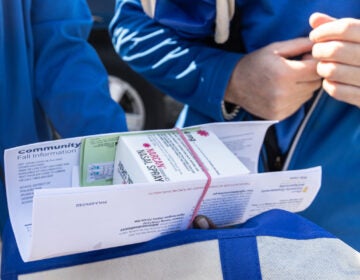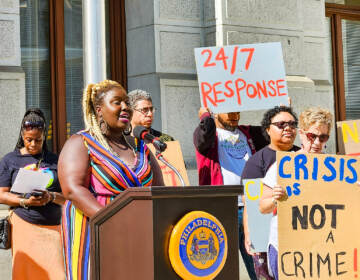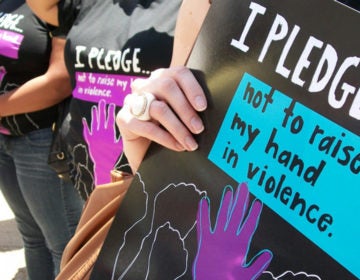Cleanup work along Philly Conrail tracks reaches ‘El Campamento’ heroin haven
Listen 2:48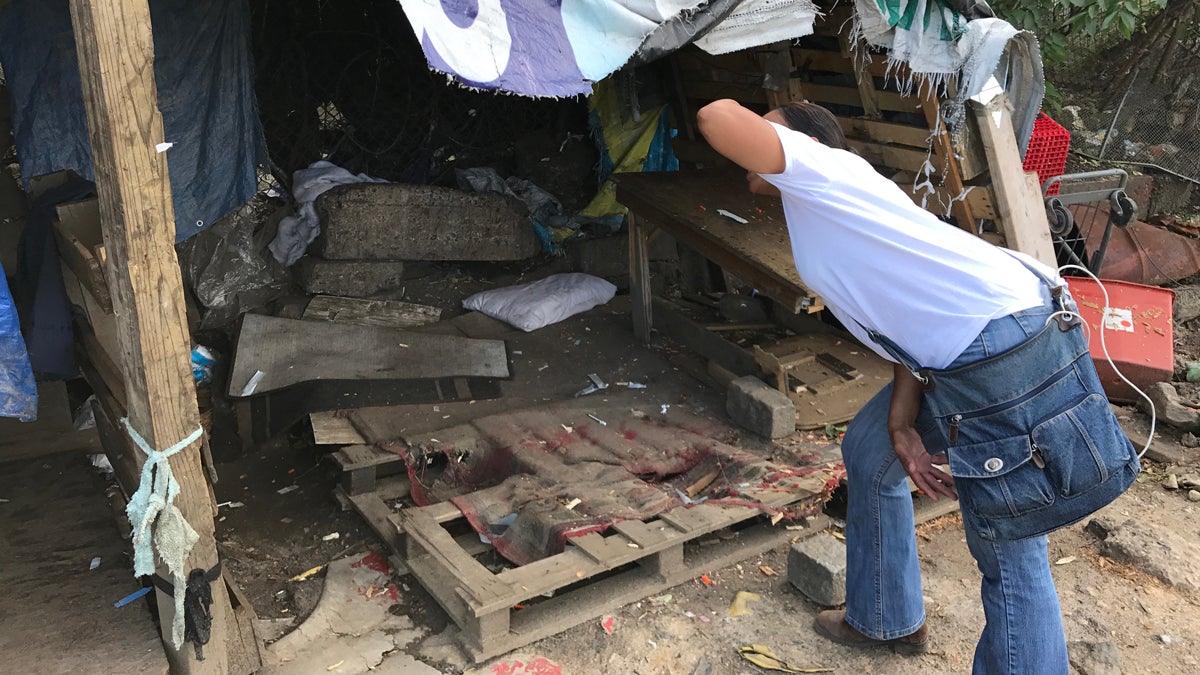
Asteria Vives peers into the shack that served as the "doctor's office" at "El Campamento." (Joel Wolfram for WHYY)
As the second week of clearing out the heroin havens along the Conrail railroad gulch in Philadelphia’s Kensington section draws to a close, the most notorious drug encampment in the path of the work is all but gone.
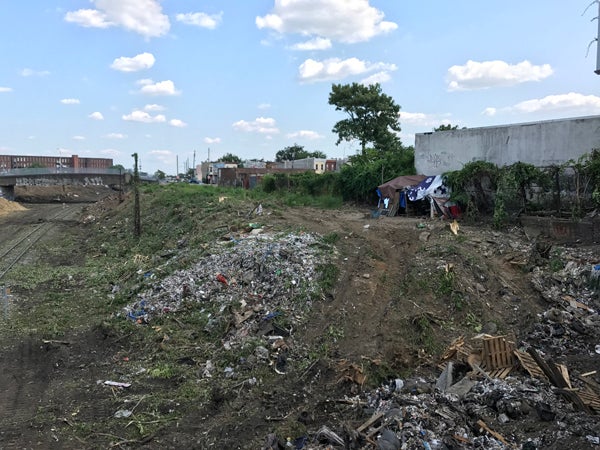
Asteria Vives walked along bulldozer tracks imprinted in the dirt at “El Campamento,” the infamous haven for heroin users along the Conrail tracks in Fairhill, after the equipment had done its work.
“People were literally watching it like it was a movie,” Vives said. Some were “devastated, and a few happy, and a few lost.”
“They don’t know where to go now,” she said.
Vives, an outreach volunteer with the group Home Quarters & Friends, has been trying to help drug users at the Conrail tracks for more than a year.
As the second week of cleanup along the Conrail railroad gulch draws to a close, the most notorious drug encampment in the path of the work is all but gone. All that remains of “El Campamento” are three shacks hugging a fence at the top of the slope leading down to the tracks and two giant mounds of trash below. They contain white syringe wrappers, mattresses, and wooden pallets that were used to build makeshift shelters.
But the camp hasn’t been completely abandoned. As Vives surveyed the scene, three people moved through a hole in the fence and disappeared into a shack, known as “the doctor’s office,” where users could pay someone to inject them with heroin.
When Conrail dismantles these shelters and puts up new fencing here, drug users will have to find other places to shoot up.
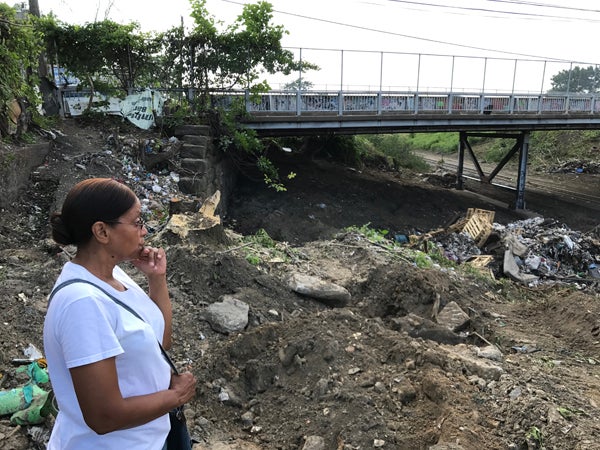
Vives and other outreach workers are encouraging them to get help instead. They’re making progress, but it’s slow work. In the first week of the cleanup, the city reported that 50 people were referred to treatment from mobile outreach stations set up near the tracks. That’s not even half of the 141 people who spoke with the outreach workers.
For many of the drug users, getting treatment isn’t as simple as it sounds.
On the street outside the former camp, Vives approached a man she recognized. Dante has been in treatment before, and he is trying to get help again.
“I don’t like to get high,” Dante told her. “I enjoy the feeling, but I don’t like all this,” he said, referring to the squalid surroundings.
Dante, 41, has a job and private health insurance, but he is having a hard time finding a place in Philadelphia where he can get the intensive outpatient treatment he said he needs. A program he had been through before said they weren’t taking new patients.
“But they also was telling me that they don’t take my insurance,” Dante said. “They take mostly welfare insurance.”
Dante said that’s also true of the treatment programs where he lives in West Philadelphia. He said he’s sent his intake papers to a place in Center City, but he’s waiting to hear back.
Vives said she’ll look into some other options for Dante. For now, she could only offer him a sandwich and words of encouragement.
WHYY is your source for fact-based, in-depth journalism and information. As a nonprofit organization, we rely on financial support from readers like you. Please give today.


